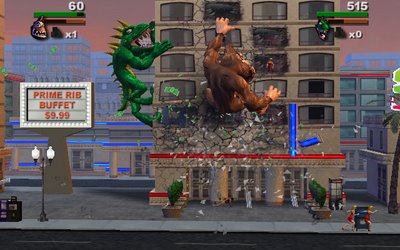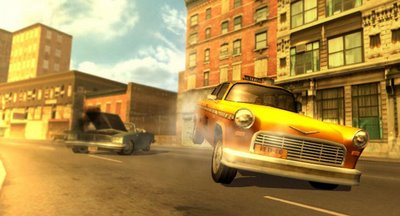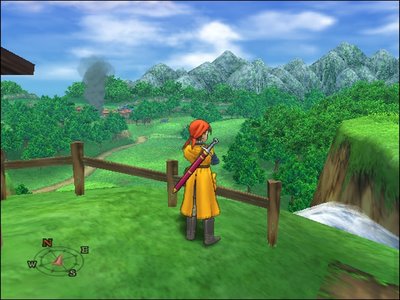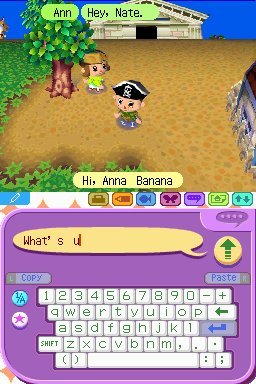
Rampage: Total Destruction
Verdict: Distracting budget fun
Platform: PS2, GC.
Rating: 3/5
Putting you in the oft desired role as a giant monster on the rampage (or is that just me?) Total Destruction is an update of a classic franchise, moving it into the realms of 3D (soon to be 4D on the PS3) and offering a load more beasties than before.
When I were a wee lad I spent hours smashing skyscrapers with my sister on the Spectrum+3 (what a machine) and this faithfully recreates those rose tinted days although perhaps a little too faithfully. You (and up to 3 other friends) are charged with destroying buildings, eating people and challenges (eat 10 mime artists, smash 5 trams - the usual monstery stuff) have been introduced to spice up the gameplay and unlock special moves and new monsters.
The move to 3D is unfortunately limited and pretty pointless as you’re restricted to a single row of buildings at a time (just like the originals). In updating the series to 3D they could have made a free roaming, city smashing fest (i’ve yet to play a truly great game of this ilk - Godzilla, pull your socks up!). Instead they’ve plumped for what amounts to an unimaginative graphical update and introduces slower gameplay and unresponsive controls.
It’s fun for friends though and at £20 you can’t knock it as it comes with the original Rampage in its retro glory and the speedier claymation styled sequel Rampage: World tour which shows up Total Destruction’s inadequacies all too well.



